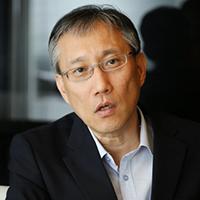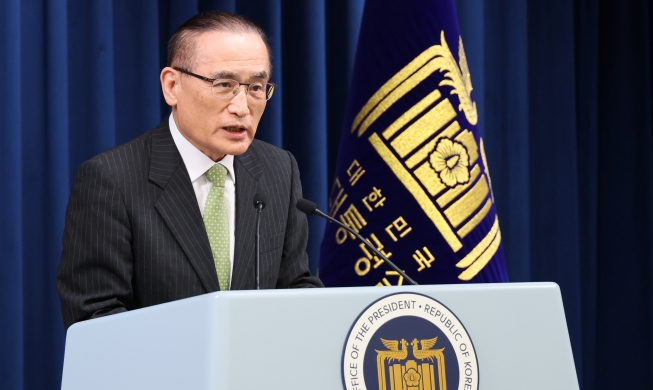
By Nam Kijeong
Professor at Institute for Japanese Studies of Seoul National University
The Industrial Heritage Information Centre in Tokyo is becoming the new flashpoint of history distortion between Korea and Japan. The government-built center highlights the results of Japan's Meiji Industrial Revolution, especially in steel, iron and shipbuilding. The exhibition there mostly shows off the accomplishments of the Meiji era but does nothing to commemorate the victims forced by Japan to work. Even worse, the content shows Japan's failure to keep its promise to the international community and a lack of will to do so. This is grounds for the UNESCO World Heritage Committee (WHC) to cancel the World Heritage status of the Meiji industrial sites.
To get the Meiji sites added to the list of UNESCO World Heritage in July 2015, the Japanese government accepted the WHC's recommendation of preparing an "interpretive strategy" to "allow full understanding of each site." At the time, Tokyo said in a statement, "Japan is prepared to take measures that allow the understanding that a large number of Koreans and others were brought against their will and forced to work under harsh conditions." The statement also said Japan was "prepared to incorporate appropriate measures into the interpretive strategy to remember the victims such as the establishment of an information center." In response, the Korean government released its own statement saying, "The Government of the Republic of Korea has decided to join the Committee’s consensus decision on this matter, as it has full confidence in the authority of the Committee and trusts that the Government of Japan will implement 'in good faith' the measures it has announced." Thus Seoul went along with UNESCO designation of the Meiji sites. Given Tokyo's attitude so far, however, the only interpretation is that Japan has violated the "principle of good faith."
Considering the "special relationship" between UNESCO and Japan, Tokyo's broken pledge should be a source of shame for the Japanese people. The birth of UNESCO "provided a big light of hope for Japanese people when they were in the ruins and aftermath and of defeated war and in despair." This is because, quoted from the Japanese Ministry of Education, Culture, Sports, Science and Technology, the U.N. body presented the right path for Japan to follow to reflect "on the past history of war of aggression and (Japan's wish) to be reborn as a country of peace and culture under its Pacific Constitution."
In July 1947, UNESCO launched its first cooperative association in the Japanese city of Sendai. In November the same year, Japan hosted the inaugural National Convention of the UNESCO Movement. In response to the movement jointly held by both the public and private sectors, UNESCO in July 1951 made Japan its 60th member country two months before the signing of the Treaty of San Francisco, aka the Treaty of Peace with Japan. Thus Japan returned to the international community by knocking on UNESCO's door.
At the time, the UNESCO Constitution captivated the Japanese people. In the beginning, it says "Since wars begin in the minds of men, it is in the minds of men that the defences of peace must be constructed." The U.N. body said, "The great and terrible war, which has now ended, was a war made possible by the denial of the democratic principles of the dignity, equality and mutual respect of men, and by the propagation, in their place, through ignorance and prejudice, of the doctrine of the inequality of men and races."
"The peace must therefore be founded, if it is not to fail, upon the intellectual and moral solidarity of mankind," it added, emphasizing the need for "the unrestricted pursuit of objective truth." Japan should ask itself if it is embodying the spirit of UNESCO through the inclusion of its Meiji Industrial Revolution sites.
Amid the Black Lives Matter (BLM) movement, people in the U.S. and Europe have begun to reevaluate historical figures who supported colonial rule and the slave trade. In the U.K., protesters removed statues of slave traders Edward Colston and Robert Milligan and that of Cecil John Rhodes, an important figure in Britain's imperialist history. In the U.S., the movement led to the removal of the statue of American Civil War Gen. Robert E. Lee, who supported slavery. A statue of Theodore Roosevelt was also demolished from its location in front of the American Museum of Natural History in New York's Manhattan area because of the 26th U.S. president's history of racial discrimination. In Boston, a statue of Abraham Lincoln, also known as the Emancipation Memorial, was removed. At Princeton University, Woodrow Wilson's name is being erased. Thus those who led the freeing of African Americans from slavery (Lincoln) or founded the League of Nations (Wilson) have not been exceptions to the BLM movement.
Along with the COVID-19 pandemic, 2020 will be remembered as a historic year that saw a dramatic reversal of the center and periphery of a mistaken historical narrative based on colonialism and racism. The information center in Tokyo is clearly incompatible with this worldwide trend. Thus the Japanese government should "get woke" about the anachronism embedded in its Meiji industrial heritage as soon as possible.
Nam is an associate professor at the Institute for Japanese Studies of Seoul National University.
Translated by Korea.net staff writer Yoon Sojung.
